These days, it feels as if East Asia has become a laboratory for art fair business models. There is the Southeast Asian-focused Art Stage Singapore, trying to get mileage out of its supposed proximity to Indonesian collectors; ArtBasel Hong Kong, the fair with the global brand which attracts foreign collectors and Asian galleries with hopes of showing in Switzerland; Photo Shanghai, a dedicated photo fair hoping to take advantage of the market for photography, neglected until now; moribund government fairs such as the Shanghai Art Fair and Spring Art Salon; and then smaller, rather random fairs plagued with a lack of organization and vision such as SHContemporary (and why not include Art Beijing). These past two years have seen some interesting innovations for the concept of an art fair. For instance, this past September, Davide Quadrio, Massimo Torrigiani, and Donna Chai launched Art in the City—a small-scale fair housed at K11 Art Mall, which combines an exhibition platform with a series of events to be held throughout the year, where Art in the City maintains year-round contact with galleries bringing prospective buyers to their spaces for tours and talks.
The real game changer, however, was without a doubt ART021, launched in 2013 by Bao Yifeng and Ying Qinglan. The two founders, both collectors—Ying a gallery owner and Bao the owner of a PR and events company—came up with an inventive idea: “Let’s use our strong connections with collectors, invite a few good galleries to a small-scale fair and see what happens.” The results pleased dealers: not only were they connecting with old clients, but meeting new people. The much-talked-about-yet-often-elusive “Chinese collector” seemed to be timidly emerging from the forest. Viewers raved about the quality of works and intimacy of the setting—finally a fair which was actually manageable and didn’t induce headaches after a few hours of scurrying between the booths. West Bund Art and Design seems to be aiming for a similar model. Zhou Tiehai, a renowned artist and now the director of West Bund (who was himself involved with SH Contemporary during the heydays of 2007), is not only extremely well-connected, but has a good mind for both art and business—with the government connections to boot. This formula is something that many Western fair organizers failed to understand.
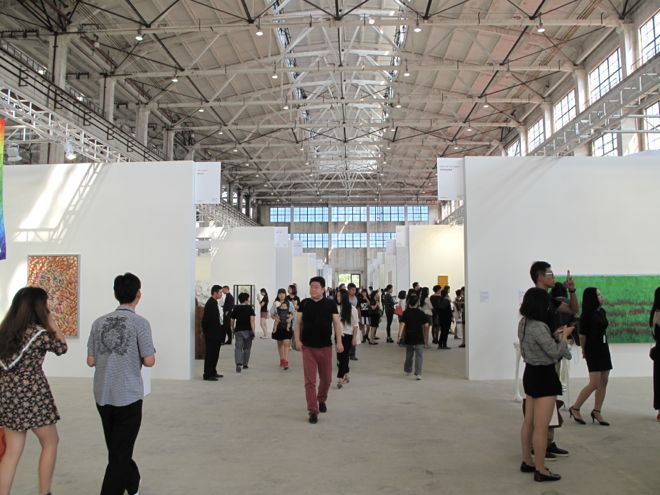
West Bund opened on September 25th, in a gorgeous former airplane factory in a far-flung corner of Xuhui at the West Bund Cultural Center. The voluminous space, with large clerestory windows and many remaining industrial elements, played a unique host to 25 local and international galleries. The top floors dedicated to design were sparsely populated with design exhibition spaces such as Pearl Lam Galleries (deconstructed traditional Chinese furniture) and L’Officiel Art featuring rugs of Chinese Contemporary Masters, (a concept which we never really quite grasped), while the bottom floors featured blue chip art such as Yayoi Kusama’s pumpkin sculptures amongst more locally oriented booths featuring emerging Chinese artists. “The beautiful venue and generous booths of well-curated international galleries, showing high quality work, has proven a winning formula. We look forward to the next edition!” gushed Neil Wenman, a senior director of Hauser and Wirth. Billy Tang, curator at Beijing’s Magician Space, had similarly supportive words: “It’s a unique format that is very intimate–the location is also fantastic. . . . It’s a very sophisticated fair and the large space we have allows us to express the diversity of our exhibition program.”
The only minor grumblings seemed to be with regard to insufficient air conditioning and transportation hassles. While VIPs were well taken care of, plebes had trouble finding cabs in this fairly remote (or non-central) part of town.
Overall, most galleries were greatly impressed with the level of promotion and organization, says Tang, “The organization has been very detailed and flawless, from the exhibition layout to its impressive promotional energy to support this event . . . West Bund collaborates with nearly 20 media organizations. In the mean time, they are quite active at self-promotion. Everything is in order for West Bund to push on and become an influential event in the art calendar for this region.”
“Region” is perhaps the key word here. While galleries generally saw quite positive sales, most collectors were from Shanghai and its environs, with a few from Beijing, Hong Kong and Taiwan, “I think the concentration in this fair was on the Chinese Mainland collectors. There weren’t many foreign collectors including those in Taiwan unless they were doing business in the region,” says Mathieu Borysevicz, the director of BANK. “Demographically speaking, most were top Chinese veterans and young collectors,” says Megan Leckie, the director of Pearl Lam Galleries Shanghai, “All came to support, and some bought.”
Simon Wang, the director of Antenna Space, found that collectors were still somewhat conservative in their tastes, “Most collectors tend to buy works that have a secondary market…It’s a little difficult. They are definitely less adventurous. We are having a Huang Yuxing painting show in the gallery now. Everyone came to our booth asking for Huang Yuxing.”
And while most galleries are very interested in creating relationships with local collectors, the result can often be slower actual sales at the fair, says Borysevicz, “Sales were not as good as I expected given the lead up to the fair in terms of [Zhou] Tiehai’s campaigning . . . I think there is not a lot of urgency for Chinese collectors to buy; they can just kind of twiddle and tweedle. I guess for that reason we had a lot of interesting conversations.”
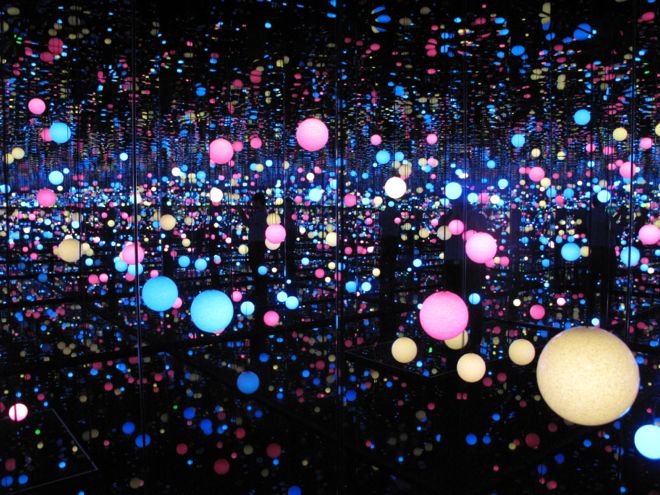
草间弥生,《无限镜屋》,2014(大田画廊)

佩斯北京的展位--Carsten Nicolai和邱晓飞的作品
In terms of sales, however, most galleries were beaming. Neil Wenman, the director of Hauser and Wirth, placed works by six local and foreign artists, “We had a very strong opening at the fair with our major clients from Shanghai and Beijing in attendance and eager to acquire. We placed works by Thomas Houseago, Zhang Enli, Sterling Ruby, Christopher Orr, Wilhelm Sasnal and Jakub Julian Ziolkowski.” Pearl Lam Galleries sold several of Ren Ri’s honeycomb works, paintings by Zhu Jinshi and China Business Newsreported one big institutional sale of Jim Lambie’s metal painting “Metal Box Hyacinth Orchid” to the Long Museum for GBP 160,000. Antenna Space sold paintings by the up-and-coming artist Li Ming and works by Guan Xiao, Wang Shang and Liu Xiaohui, while Beijing’s White Space reportedly cleared their whole booth, selling out of paintings by the young artist Shi Zhiying.
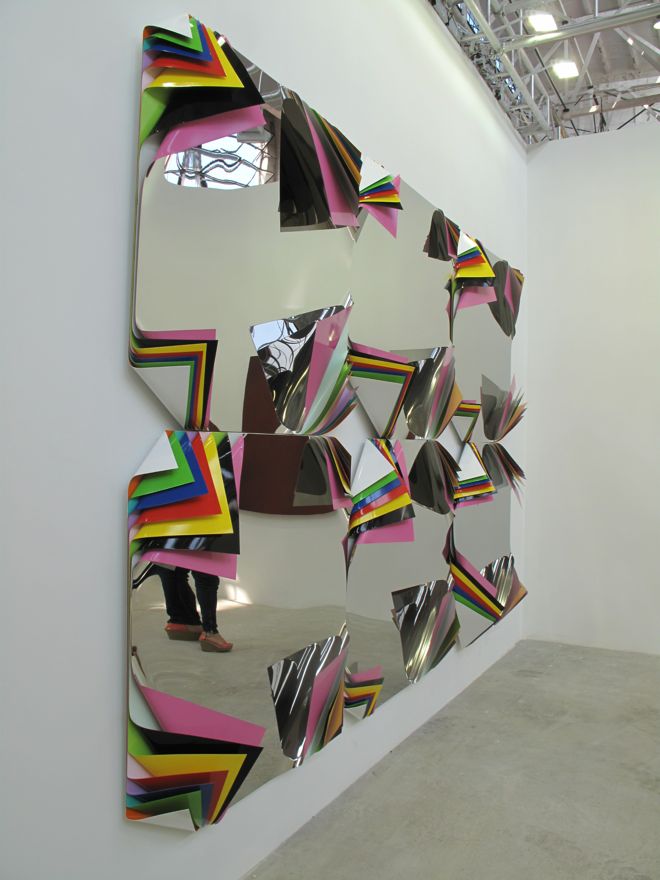
吉姆·兰比,”Metal Box Hyacinth Orchid,” 铝板,铁,荧光漆,
Roberto Ceresia, the owner of Aike–Dell’Arco Gallery, said that a few key works were sold and was very positive about the potential of the fair: “What I like about the fair is that it is a new model. And it proved successful. It’s huge location with spacious booths and 25 galleries.” With booths of over 140 sqm, collectors could peruse works in comfort, unmolested by the crowds of general public which typified Photo Shanghai or ArtBasel Hong Kong. However, as the fair receives support from the Xuhui government, a “public” element was worked in, in the form of a curated exhibition which runs from October 1–25. With the example of West Bund and Art021, both galleries and public are chanting the mantra “less is more.”
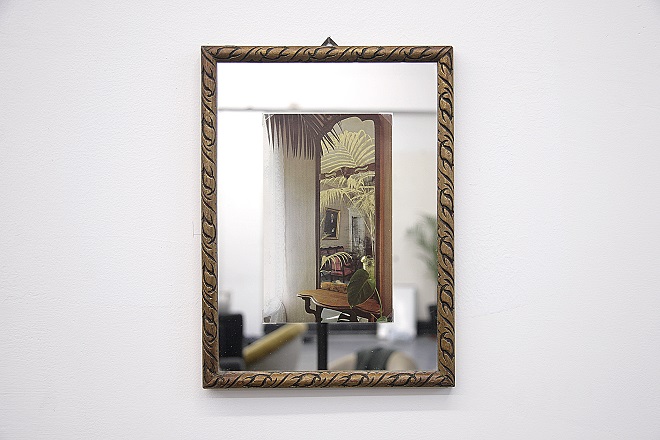
胡昀,《There is nothing in betwee》,明信片设色,古董镜27.8 x 20.8cm, 2014
The fair’s location in the West Bund area is also crucial to its success. The 8.4 km long West Bund Cultural Corridor which includes the Yuz Museum, the Long Museum and Oriental Dreamworks is part of an inititative by Xu Hui district mayor Jian Fei. The plan was to turn the former industrial zone which included the Longhua airport and shipping and manufacturing facilities into 4 million sqm of commercial, business development. The area is supposed to be dotted with cafes and theaters, but sadly the layout means that these institutions are not really in walking distance, unlike say New York’s museum mile and therefore it has not really become a destination, rather a place one goes to see a specific museum opening. Still despite the planning flaws, the fair should benefit from being part of something bigger with strong government support to help cut through organizational red tape.
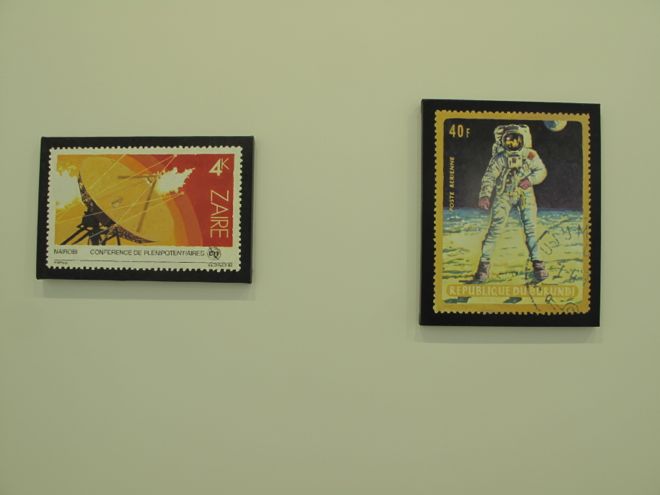
卡德尔•阿提亚,《对独立不再有幻想》,2014(常青画廊)

李青,《纪念物•亚洲风景》, 2013–2014 (Leo Xu Projects)

关小的作品(天线空间)

张培力,《庄严的圆(手稿)》,2014(博而勵画廊)

靳山,《小坏蛋》,2013(BANK)

唐永祥,《两个五角星,下面有手还有皮带》,2014

宫岛达男,《宝塔》,LED灯,电线,不锈钢,2008


西岸艺术与设计博览会: 设计项目